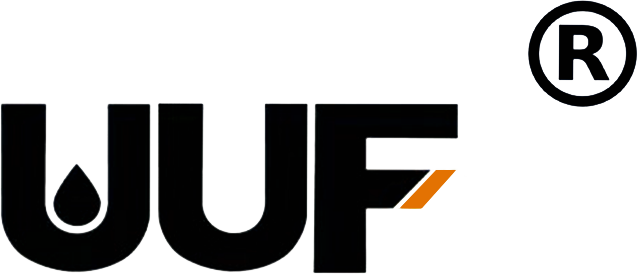Isuzu Oil Seals: A Comprehensive Guide for Car Owners
Time:
2025-05-05
Isuzu Oil Seals: A Comprehensive Guide for Car Owners Table of Contents 1. Introduction to Isuzu Oil Seals 2. Why Are Isuzu Oil Seals Important? 3. Types of Isuzu Oil Seals 3.1 Lip Seals 3.2 Flat Seals 3.3 Custom Seals 4. Functions of Isuzu Oil Seals 5. Maintenance Tips for Isuzu Oil Seals 6. When to Replace Isuzu Oil Seals 7. In
Isuzu Oil Seals: A Comprehensive Guide for Car Owners
Table of Contents
- 1. Introduction to Isuzu Oil Seals
- 2. Why Are Isuzu Oil Seals Important?
- 3. Types of Isuzu Oil Seals
- 4. Functions of Isuzu Oil Seals
- 5. Maintenance Tips for Isuzu Oil Seals
- 6. When to Replace Isuzu Oil Seals
- 7. Installing New Isuzu Oil Seals
- 8. Frequently Asked Questions
- 9. Conclusion
1. Introduction to Isuzu Oil Seals
Isuzu vehicles, known for their robustness and reliability, rely heavily on quality components to maintain optimal performance. Among these components, **oil seals** play a pivotal role. Oil seals are designed to keep lubricants contained within the engine and other mechanical systems, preventing leaks and ensuring that moving parts operate smoothly.
In this guide, we will explore the essential aspects of Isuzu oil seals, including their types, functions, maintenance, and installation procedures. With this knowledge, every car owner can take proactive steps to ensure the longevity and efficiency of their vehicle.
2. Why Are Isuzu Oil Seals Important?
Understanding the importance of Isuzu oil seals is crucial for any car owner. These seals are responsible for several critical functions:
- **Preventing Fluid Leaks**: Oil seals effectively seal the engine and transmission, preventing essential fluids from leaking out, which can lead to performance issues and potential damage.
- **Maintaining Pressure**: They help maintain proper pressure within the engine, ensuring that oil circulates effectively to lubricate moving parts.
- **Protecting Against Contaminants**: Oil seals protect internal components from dust, dirt, and moisture that can enter through gaps and lead to wear and tear.
Regularly checking the condition of your oil seals can save you from costly repairs and ensure your Isuzu runs smoothly over the years.
3. Types of Isuzu Oil Seals
There are various types of oil seals used in Isuzu vehicles, each designed for specific applications. Understanding these types can help you make informed decisions when it comes to maintenance and replacement.
3.1 Lip Seals
Lip seals are the most common type of oil seal found in Isuzu vehicles. They consist of a flexible lip that makes contact with a rotating shaft, effectively sealing the oil and preventing leaks. Lip seals are typically made from durable materials such as rubber or silicone, providing long-lasting protection.
3.2 Flat Seals
Flat seals, also known as gasket seals, are used in situations where two flat surfaces meet. These seals are essential for preventing fluid migration between components, such as between the engine block and oil pan. Flat seals are often made from cork, rubber, or composite materials, each chosen based on specific application requirements.
3.3 Custom Seals
In some cases, Isuzu vehicles may require custom oil seals tailored for unique applications. These seals are designed to fit particular dimensions and specifications, ensuring a perfect fit and optimal performance. Custom seals are usually manufactured from high-quality materials to withstand extreme conditions.
4. Functions of Isuzu Oil Seals
The primary functions of Isuzu oil seals encompass several aspects of vehicle performance:
- **Sealing**: The most crucial function is sealing lubricants within the engine or transmission, preventing leaks that could lead to significant issues.
- **Supporting Rotation**: Oil seals support the rotation of shafts and other moving parts, allowing for smooth operation without friction or wear.
- **Lubrication**: By keeping oil contained, these seals ensure that moving parts receive proper lubrication, which is vital for reducing wear and prolonging lifespan.
5. Maintenance Tips for Isuzu Oil Seals
Proper maintenance of Isuzu oil seals can extend their life and improve overall vehicle performance. Here are some essential maintenance tips:
- **Regular Inspections**: Periodically inspect oil seals for signs of wear, cracking, or deformation. Early detection of issues can prevent more significant problems down the road.
- **Check Fluid Levels**: Ensure that oil levels are maintained within recommended limits, as low oil levels can lead to excessive heat and wear on seals.
- **Avoid Contamination**: Keep the area around oil seals clean to prevent dirt and debris from entering the engine or transmission.
6. When to Replace Isuzu Oil Seals
Knowing when to replace Isuzu oil seals is critical for maintaining vehicle performance. Signs that indicate a need for replacement include:
- **Oil Leaks**: Visible oil leaks around the engine or transmission often signal that oil seals are damaged or worn out.
- **Low Oil Levels**: Frequent drops in oil levels without obvious leaks can indicate seal failure.
- **Unusual Noises**: Grinding or whining noises from the engine may suggest that oil seals are allowing debris into critical areas.
7. Installing New Isuzu Oil Seals
Installing new Isuzu oil seals requires precision and care. Here is a step-by-step guide:
1. **Gather Tools and Materials**: Ensure you have the necessary tools, including a seal puller, hammer, and installation tool. Have the new oil seals ready.
2. **Remove Old Seals**: Carefully remove the old seals using a seal puller, taking care not to damage the surrounding components.
3. **Clean the Area**: Thoroughly clean the area where the new seals will be installed to prevent debris from interfering with the seal.
4. **Install New Seals**: Using an installation tool, gently press the new seals into place. Ensure they are seated evenly and securely.
5. **Reassemble Components**: Reassemble any components you had to remove and refill fluids as necessary.
8. Frequently Asked Questions
**Q1: How often should I check my Isuzu oil seals?**
A: It’s recommended to inspect your oil seals during regular maintenance checks or every 5,000 miles.
**Q2: Can I drive with a damaged oil seal?**
A: It is not advisable to drive with a damaged oil seal, as it can lead to significant engine or transmission damage.
**Q3: What are the signs of a failing oil seal?**
A: Signs include visible oil leaks, low oil levels, and unusual noises from the engine.
**Q4: Are all oil seals the same for Isuzu vehicles?**
A: No, oil seals vary by model and application. Always refer to your vehicle’s specifications.
**Q5: Can I replace oil seals myself?**
A: Yes, replacing oil seals can be done as a DIY project if you have the proper tools and follow the correct procedure.
9. Conclusion
Understanding Isuzu oil seals is essential for every car owner looking to maintain their vehicle's performance and longevity. By recognizing the importance of these seals, types available, their functions, and how to maintain and replace them, you will be better equipped to care for your Isuzu. Regular checks and timely replacements can save you from costly repairs and ensure that your vehicle remains reliable on the road. Embrace proactive vehicle maintenance and enjoy the smooth ride that your Isuzu promises!
Keyword:
Isuzu oil seal


















